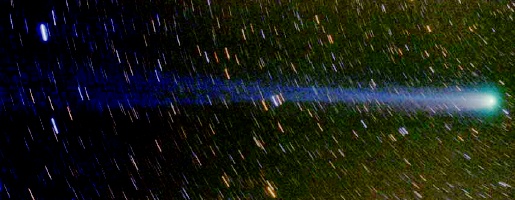 |
|||
|
Hyakutake generated one of the longest cometary tails.
|
|||
| COMET HYAKUTAKE | |||
| This comet was discovered in January 1996 by a Japanese amateur astronomer named Yuji Hyakutake. Comet Hyakutake, when it was found, was 300 million kilometres from the Sun and 275 million kilometres from the Earth. | |||
| Hyakutake was notable for passing so close to both the Earth and the Sun. It went by Earth at about 15 million kilometres, one tenth the distance of the Earth from the Sun and was the fifth closest comet of the 20th century. Its closest approach to Earth took place on 25th March 1996 and its closest approach of the Sun (just 34 million kilometres) on the 1st May 1996. It will return, but not for 14,000 years. | |||
 The orbit of Hyakutake. |
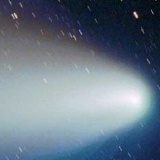 Hyakutake's cometary tail will not be seen for another 14,000 years. |
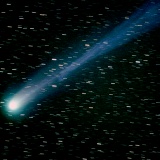 Hyakutake's impressive tail was best observed away from city light pollution. |
|
| In common with many comets, parts of the nucleus fragmented, with the separate pieces travelling along in parallel with the main core. The fragments, composed of the same material and under the same conditions, started to generate their own tails. | |||
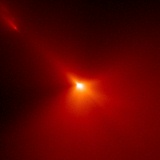 Hubble Space Telescope wide-angle view of the nucleus of Hyakutake and separate fragments. |
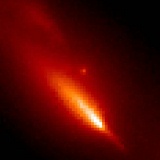 Hubble Space Telescope image of Hyakutake's fragments and additional tails. |
||
| Observers lucky enough to catch Hyakutake at its best, under dark skies away from city lights, reported its spectacular tail. The comet's streaming gas tail was estimated to stretch across somewhere between 60o and 80o of sky. Hale-Bopp's tail was considerably shorter, spanning perhaps 30o. Astronomers with a good view of the comet reported that the comet's coma, or atmosphere, stretched across 2o to 3o of sky and had a greenish blue colour. | |||
|
|
|||